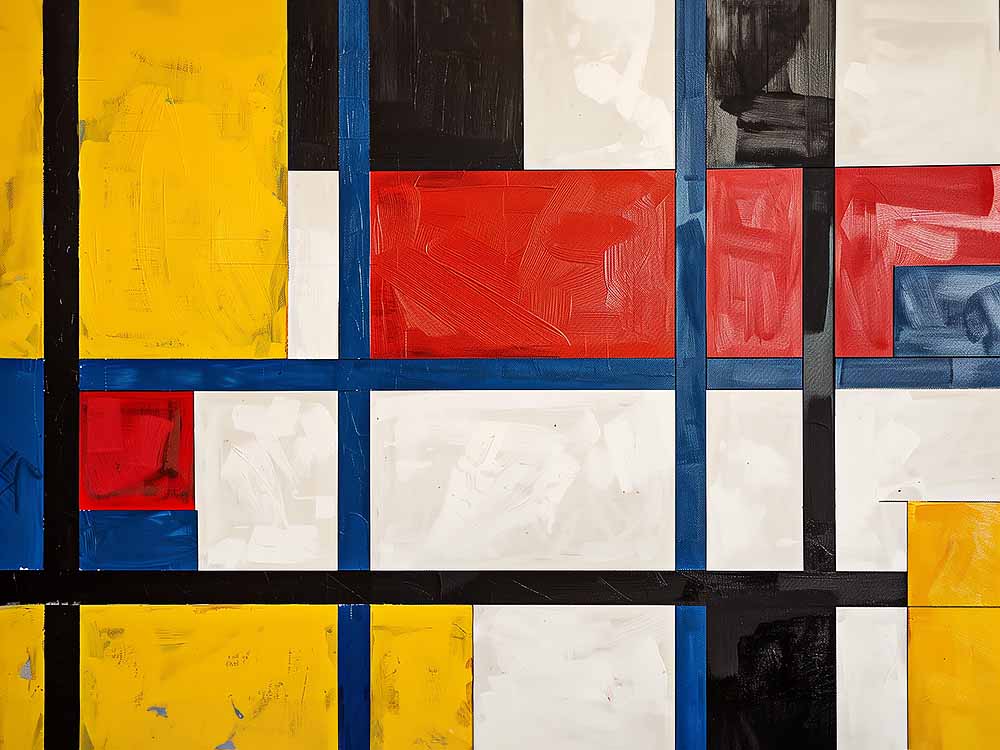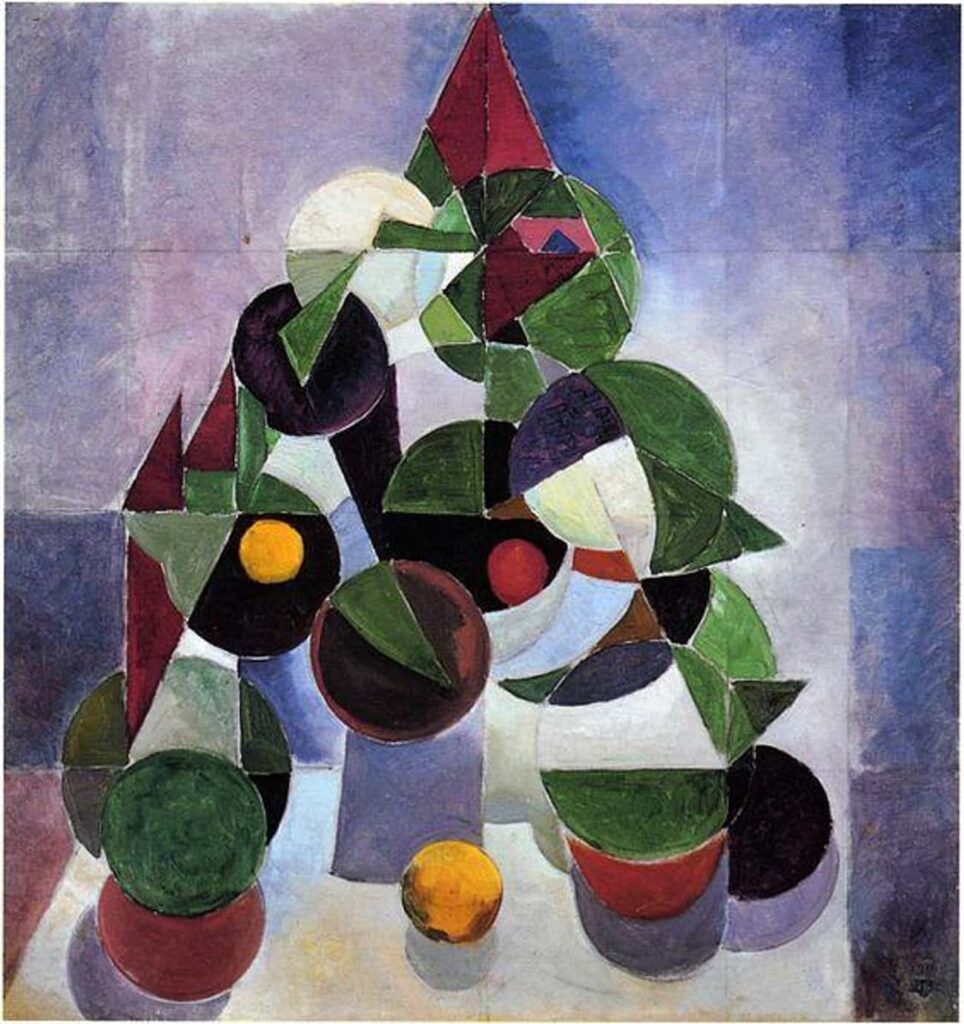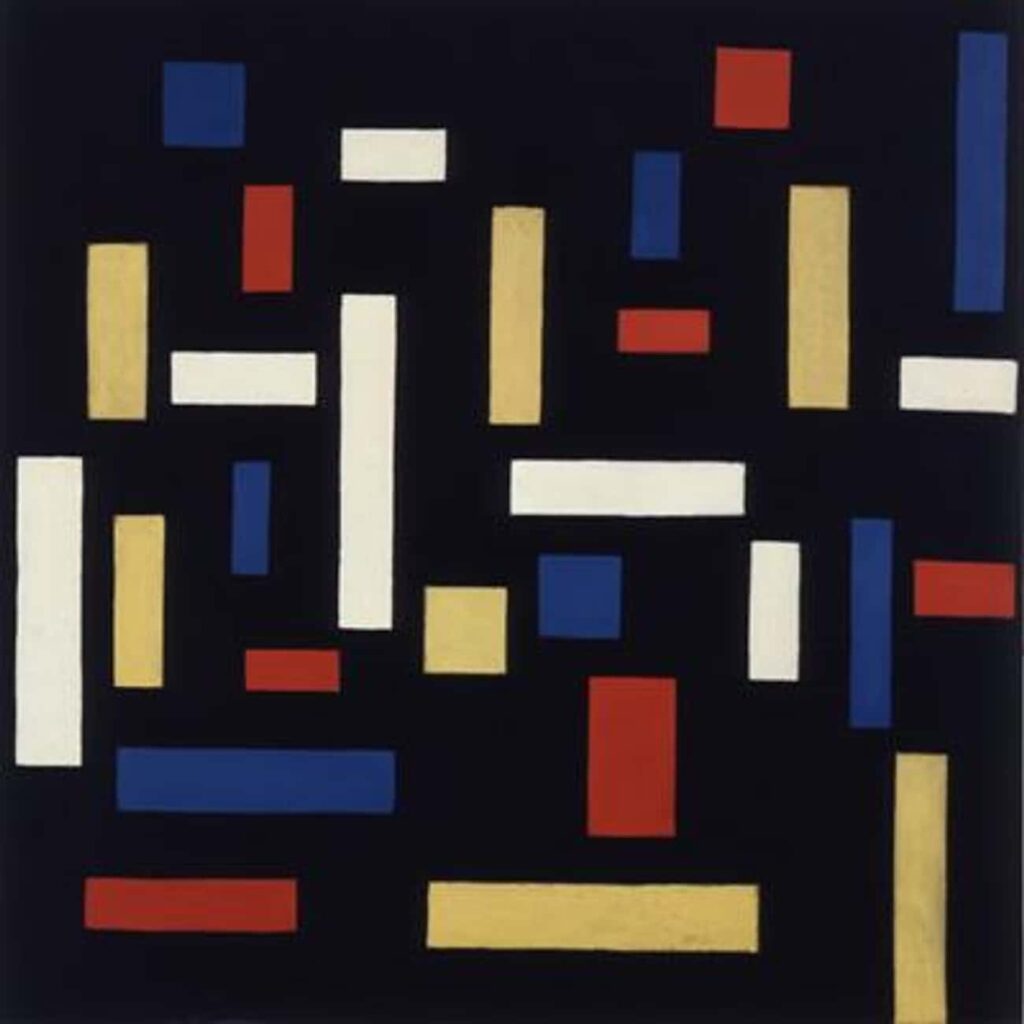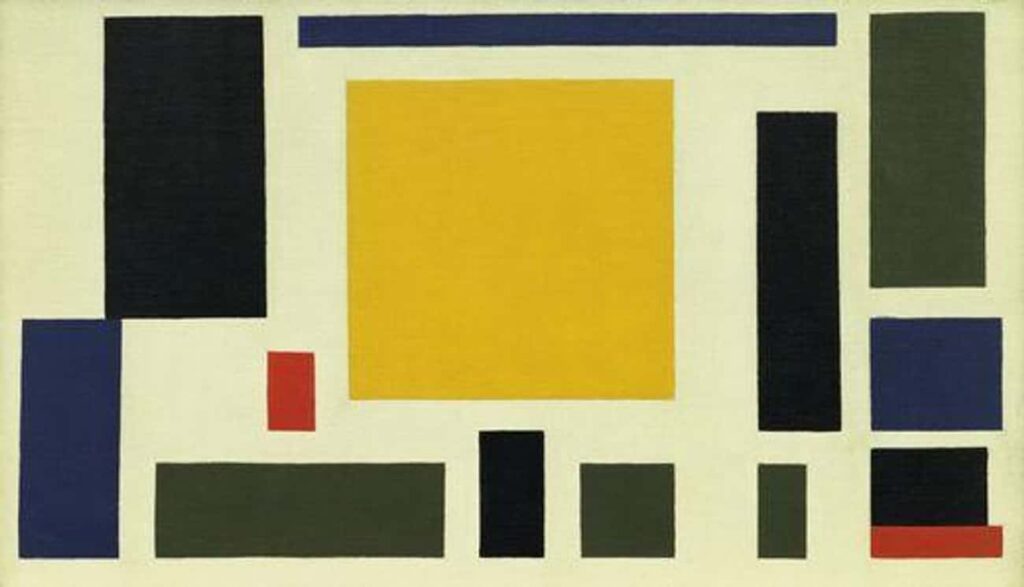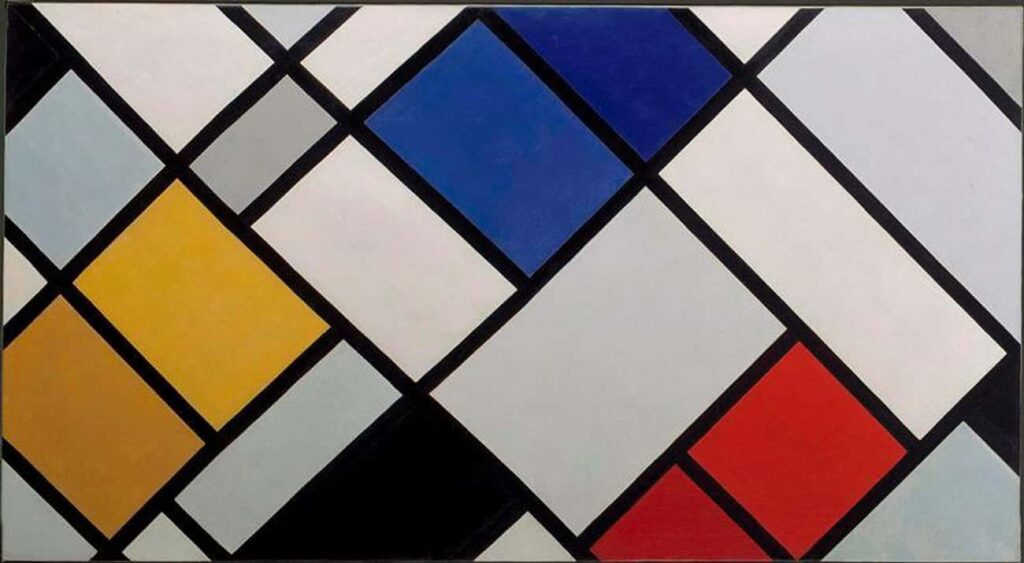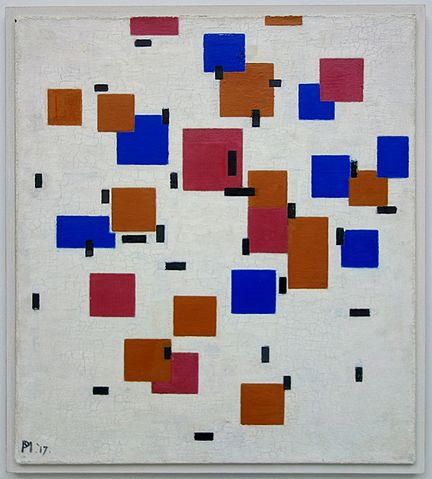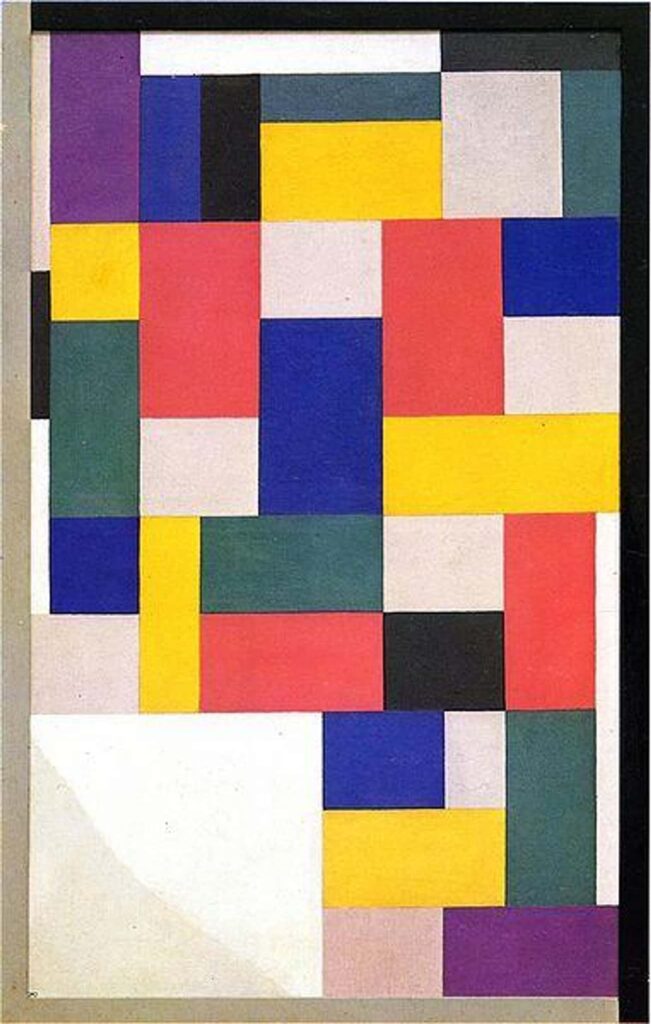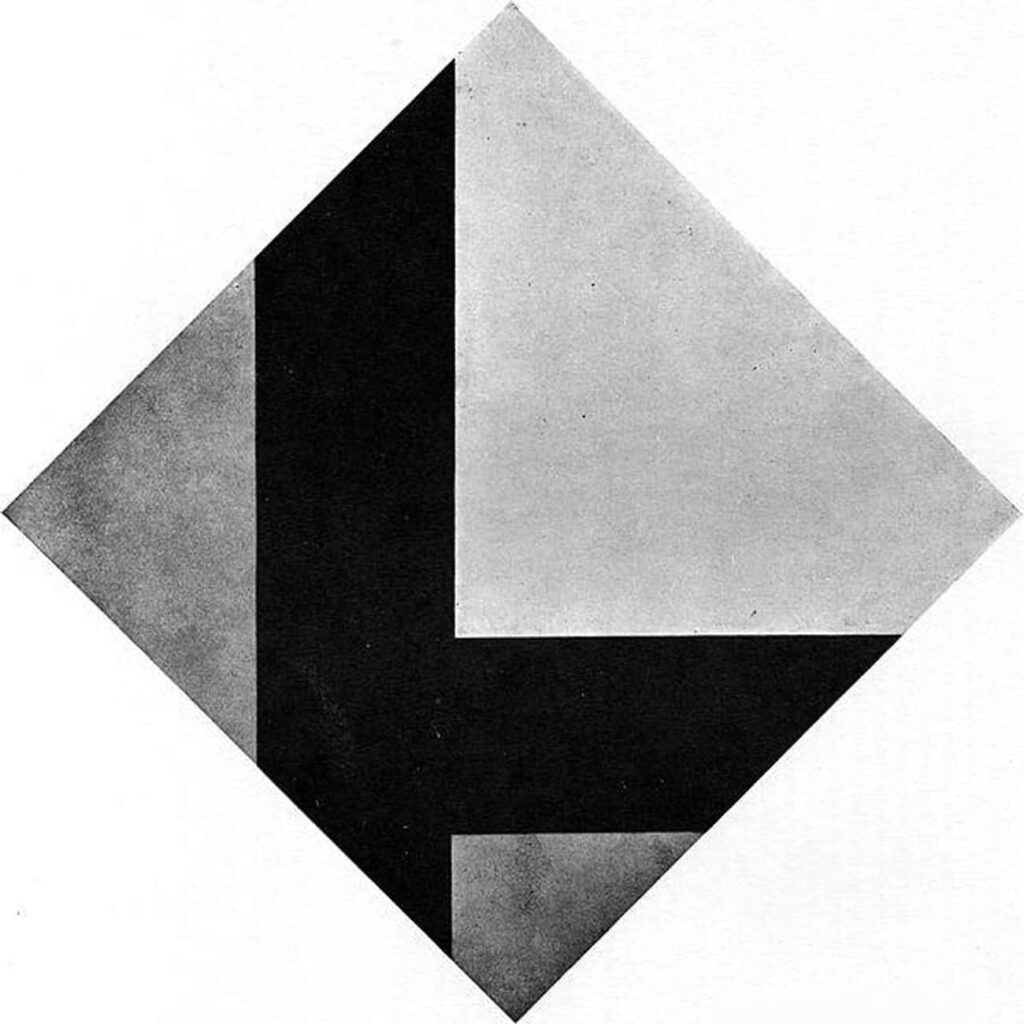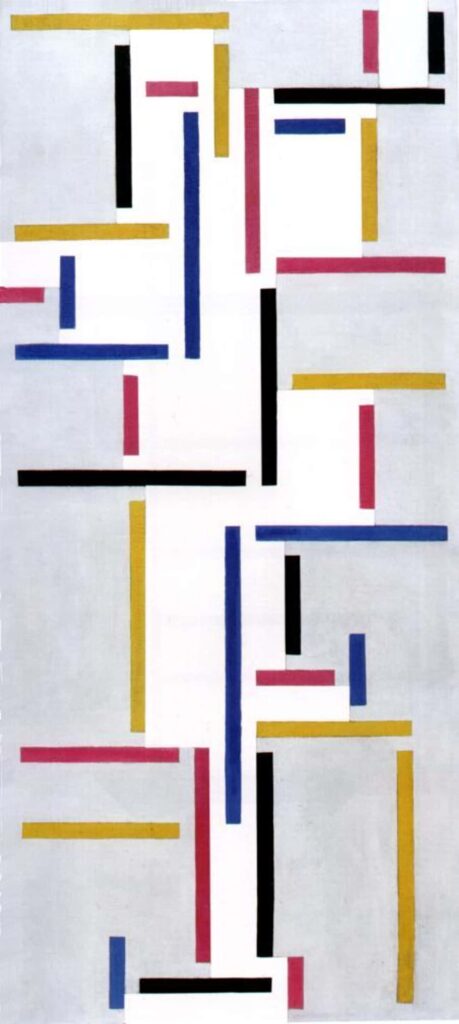Do you like bold, geometric shapes and a limited color palette? If so, De Stijl might be the art movement for you!
Prepare to be swept away into the mesmerizing world of De Stijl, an avant-garde movement that turns art into a symphony of geometric shapes and primary hues. Join me on a captivating journey through the Mondrian mystique and the harmonious realm of De Stijl, where every stroke tells a story of simplicity, abstraction, and a kaleidoscope of visual delight.
1. What is De Stijl?
De Stijl, also known as “The Style,” and “Neoplasticism”, was an artistic movement that originated in the Netherlands in the early 20th century. It was founded by painter Piet Mondrian and architect Gerrit Rietveld, and its members included artists, architects, and designers. The movement was focused on simplification and abstraction, and its key principles included the use of horizontal and vertical lines, a limited color palette (typically just black, white, and primary colors), and the use of geometric shapes.
2. The History of De Stijl
De Stijl was founded in 1917 and lasted until around 1931. During this time, its members published a magazine of the same name that featured articles, essays, and illustrations by the group’s members. The movement was heavily influenced by Cubism, Futurism, and the Russian Constructivist movement, and it sought to create a universal style that could be applied to all forms of art and design.
We speak of concrete and not abstract painting because nothing is more concrete, more real than a line, a color, a surface.
— Theo van Doesburg
3. The Key Elements of De Stijl
As mentioned above, De Stijl was characterized by using horizontal and vertical lines, a limited color palette, and geometric shapes. These elements were used to create a sense of harmony and balance within the composition. The use of a limited color palette was also seen as a way to create a universal language that people from all cultures could understand.
4. De Stijl in Art and Design
De Stijl had a major influence on both art and design, and its principles can be seen in a wide range of mediums, including painting, sculpture, architecture, and even furniture design. The movement’s emphasis on simplicity and abstraction has had a lasting impact on the art world and can still be seen in contemporary works today.
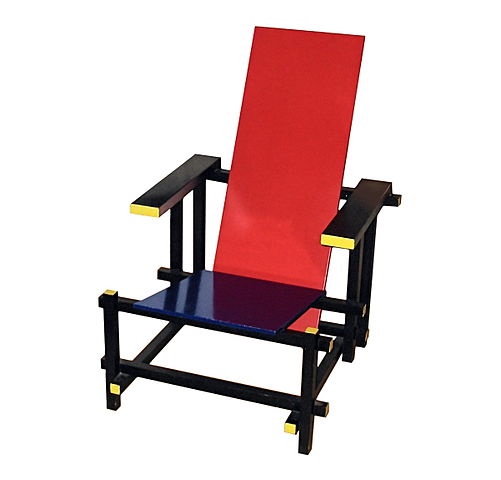
5. Famous De Stijl Artists
Some of the most well-known De Stijl artists include Piet Mondrian, Gerrit Rietveld, Theo van Doesburg, and Bart van der Leck. These artists made significant contributions to the movement and their works can be found in museums and galleries around the world.
6. The Legacy of De Stijl
De Stijl had a major influence on the art world, and its emphasis on simplification and abstraction has inspired countless artists and designers. The movement’s focus on a universal style and the use of a limited color palette has had a lasting impact on the way we think about art and design.
Art as language… in the future there will only be art. This common language will carry the message of love.
— Theo van Doesburg
7. De Stijl in Pop Culture
De Stijl’s bold, geometric aesthetic has made it a popular choice for designers and artists in various fields, including fashion, graphic design, and even music. The movement’s influence can be seen in everything from album covers to clothing and accessories.
8. Seeing is Believing
The best way to truly appreciate the beauty of De Stijl is to see it in person. Many museums and galleries have collections of De Stijl works, and there are also numerous online resources where you can view high-quality images of these stunning pieces.
9. De Stijl Today
De Stijl may have originated in the early 20th century, but its influence can still be seen in contemporary art and design. Its bold, geometric aesthetic has made it a popular choice for artists and designers looking to make a statement.
10. Time to Get Inspired
If you’re feeling inspired to give De Stijl a try, there are a few key things to keep in mind. First, remember to use a limited color palette — typically just black, white, and primary colors. You should also focus on using horizontal and vertical lines and geometric shapes to create a sense of harmony and balance within the composition. As you get started, don’t worry about perfection — the beauty of abstract art is that there are no hard and fast rules. Just let your creativity flow and have fun with it!
So why wait? Get inspired and create your own De Stijl masterpiece today! Head to your local art supply store, pick up some paints and canvas, and let your imagination take over. You never know what stunning work of art you might create.
And if you’re looking for more inspiration, check out some of the famous De Stijl artists mentioned above — their works will surely leave you mesmerized.
So what are you waiting for? Discover the bold and iconic world of De Stijl today and let your creativity shine!
Looking to explore more art genres? Head over to JoeLatimer.com for a multidisciplinary, visually stunning experience. ☮️❤️🎨
Enjoy this blog? Please help spread the word via:


